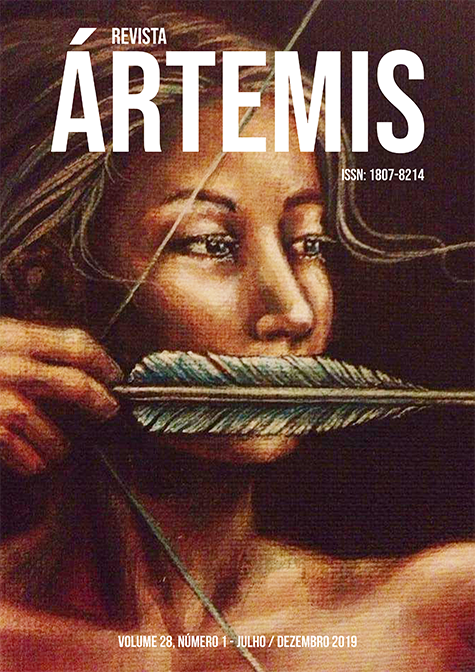The mythic, symbolic and physical representation of the indigenous woman in The Round House, by Louise Erdrich
DOI:
https://doi.org/10.22478/ufpb.1807-8214.2019v28n1.49887Keywords:
Literatura Indígena, Louise Erdrich, A Casa Redonda, Mulheres do Terceiro MundoAbstract
One of the main characteristics of Louise Erdrich’s writing is its complexity in the family, political and social narrative that reflects years of tumultuous changes in the history of the indigenous community, touching sharply on the historical injustice that is marked on its indigenous heritage. Allied to these characteristics of his works, another striking point of his writing is the presence of symbols, which are elements that play a fundamental role in indigenous literature. It is through these symbolic elements that these peoples constitute their identities and manifest their cultural and spiritual marks. All these marks of Erdrich’s writing can be seen in The Round House (2014), as we will see in this article, whose objective is to study the image of indigenous women in three dimensions: the social or real dimension, represented by the character Geraldine; the mythic or tradition dimension represented by Akii; and the symbolic dimension, represented by the buffalo.Downloads
Download data is not yet available.
Downloads
Published
2019-12-17
How to Cite
R. DA COSTA, M. V. .; KRISHNA T. FELDMAN, A. . The mythic, symbolic and physical representation of the indigenous woman in The Round House, by Louise Erdrich. Revista Ártemis, [S. l.], v. 28, n. 1, p. 73–87, 2019. DOI: 10.22478/ufpb.1807-8214.2019v28n1.49887. Disponível em: https://periodicos.ufpb.br/index.php/artemis/article/view/49887. Acesso em: 22 dec. 2024.
Issue
Section
Literatura indígena, pensamento decolonial e gênero







